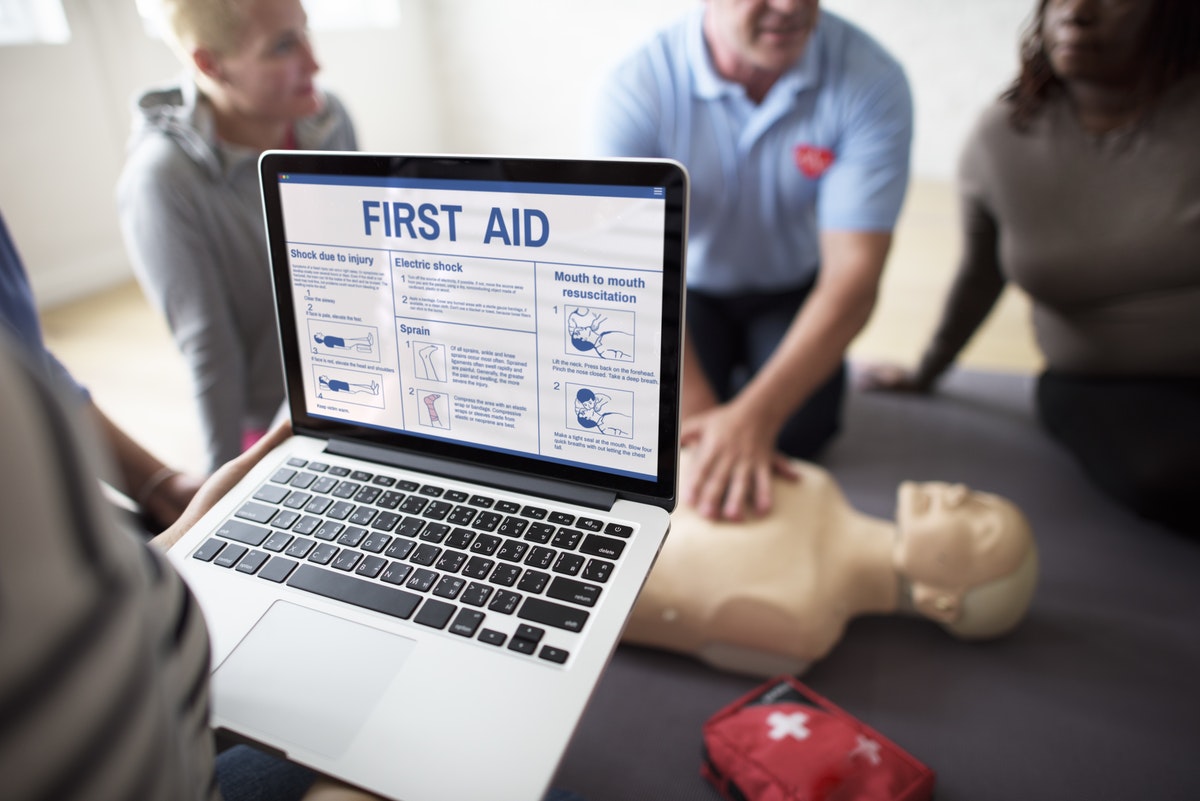A research study performed by the Occupational Safety and Health Administration (OSHA) found that there are about 10,000 cardiac arrests in the workplace each year.
The good news is that this condition is reversible in most victims if it is treated within the first few minutes. Remember the story of a guy who was revived by CPR after his heart stopped beating while playing hockey?
Precisely because of that, employers should make first aid and CPR training in the workplace mandatory.
Cardiopulmonary Resuscitation (CPR) is an emergency lifesaving procedure. People perform it to restore spontaneous blood circulation in a patient who is in a cardiac arrest.
In this article, you will learn about the benefits of first aid and CPR training in the workplace.
- Saving Lives in the Workplace
The Heart and Stroke statistics compiled by the American Heart Association are concerning. They found that there are more than 356,000 out-of-hospital cardiac arrests yearly in the US. According to the report, more than 90% of them are fatal.
In other words, 90% of people that suffer cardiac arrest die before they even reach the hospital. In situations like this, calling emergency services is not enough to save an employee’s life. Performing CPR, on the other hand, can double or triple the chances of survival after cardiac arrest.
Namely, CPR helps you keep a patient’s blood circulation regular while waiting for healthcare professional. Your employees can practice using CPR manikins with advanced features that make the training process more realistic. That way, they will gain knowledge and experiences they can use in real-life situations.
The death of a staff member in the workplace can affect your company in multiple ways.
First, it would lower your employees’ overall morale, knowing they could have done something to protect a coworker.
Second, a death in the office often feels like a death in the family. It affects all employees, whether they worked in the same department or were close to a deceased colleague.
Third, it might worsen your company’s image and employer brand since employees would not feel safe anymore.
- Promoting Security among Employees
Employees who have been injured in the past are more likely to develop feelings of anxiety and fright. By constantly worrying about the potential health and safety risks, your employees are not able to perform at their best. Their overall morale and satisfaction at work will drop. Ultimately, they will start looking for a safer and more employee-oriented job.
Therefore, investing in a safe working environment is critical for keeping employees happy and retaining them. Providing CPR training is one of the first steps to take. It encourages trust among your staff and promotes the feeling of safety.
Knowing that their colleagues are trained for first aid, your employees will feel more secure and less afraid of emergencies. That way, they will be able to focus on their jobs.
- Minimizing Workplace Accidents
Irrespective of your industry and type of business, raising employee awareness and reducing injuries is your top priority. According to OSHA, there are different types of accidents in the workplace, from cardiac arrests to slips and trips.
The main goal of first aid and CPR training is to provide your staff members with practical insights and tips on how to avoid these threats. Being aware of the common workplace incidents, employees will invest extra effort to prevent them.
- Building Employee-Oriented Company Culture
Companies that do not invest in the safety of people under their roof develop a reputation of an unsafe employer. Apart from compromising the satisfaction of your employees, a negative brand reputation can also harm your employer branding and talent acquisition. Such unfair employee treatment can also compromise your overall brand image in the general public and prevent customers from buying from you.
Providing CPR and first aid training will improve your brand’s safety culture. Your company will prove that it cares for the health and wellbeing of its staff members. In the hypercompetitive marketplace, that is an effective way to attract and retain top talent in the industry.
In addition to CPR and first aid training, there are many methods of promoting employee wellbeing, including:
- Encouraging healthier eating
- Motivating employees to exercise more
- Building a smoke-free workplace
- Preventing back pain from sitting
- Promoting mental health awareness
- Promoting work-life balance
Over to You
In a workplace, first aid and CPR can be a matter of life and death. When performed fast and appropriately, they can save an employee’s life after cardiac arrest. They also play a vital role in promoting workplace security, reducing the number of accidents, and boosting employee satisfaction.
Do you have any thoughts on CPR training in the workplace? Has your company implemented it in its safety culture? Share your experiences in the comments!


